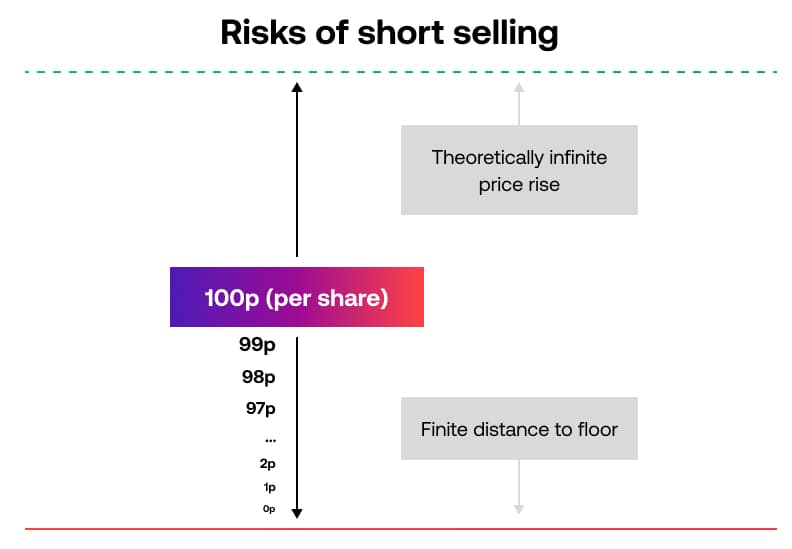
How to trade
Short selling explained
Want to trade in volatile markets? Find out how to speculate on, and hedge against, falling markets in our lesson on short selling.
- What is short selling?
- How to short sell?
- Short selling with CFDs
- Short selling with spread bets
- What does a short trade mean in practice?
- Why short sell?
- The risk of short selling
What is short selling?
Short selling, also known as ‘shorting’ or ‘going short’, is a trading strategy that seeks to take advantage of falling market prices.
When you invest, you’ll normally only profit if your holdings rise in value, but a short position means you can profit in periods of volatility too.
The traditional means of short selling involves borrowing an asset from a third party, selling it at the current market price, and then buying it back if the price falls. However, derivatives such as spread betting and CFDs have provided more flexibility over how you choose to trade.
So, what’s the difference?
Not a lot really. With both traditional short selling and derivatives, your profit and loss will always be calculated based on how far the market moves in your favour, or against you. The main differences are that when you short with derivatives, you won’t need to borrow the physical asset from a third party, and your trades will be leveraged – so your profit and loss could be magnified.
Did you know? While short selling stocks is most commonly talked about, you can actually short sell a range of financial markets, including currencies, commodities, indices and bonds.
How to short sell?
When you decide to short sell with City Index, there are two ways to open a position: CFDs and spread bets.
Short selling with CFDs
When you short sell with contracts for difference (CFDs) you’ll be agreeing to exchange the difference between the price at which you sold the asset, and the price at which you bought it back.
Say you thought the price of oil was going to fall and opened a short trade of 5 oil CFDs. If the market fell by 30 points and you closed your trade, your profit would be £150 – that’s the 30-point difference multiplied by the 5 contracts that you bought. But if oil increased by 30 points, you’d lose £150.
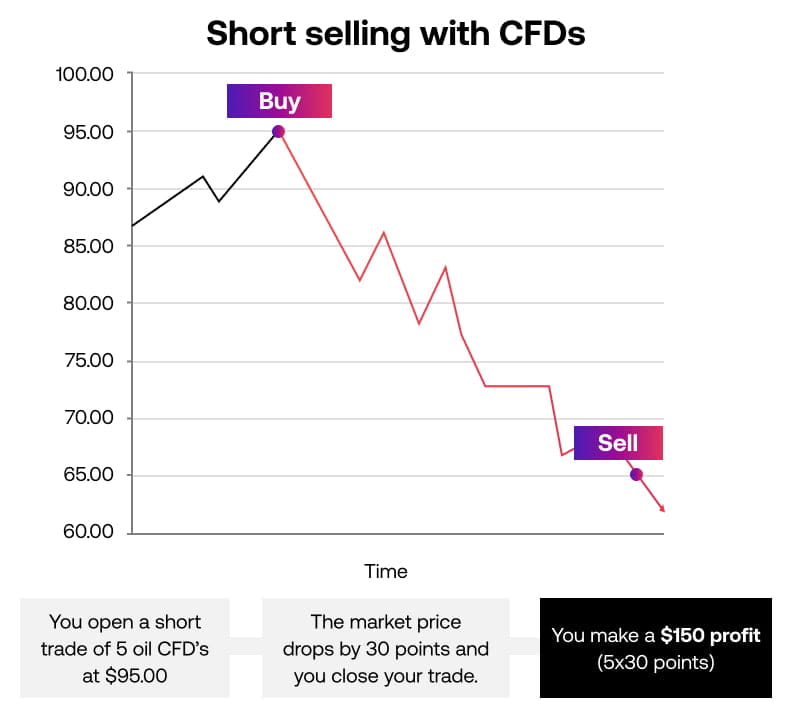
Short selling with spread bets
When you short sell via spread bets, you’ll be placing a bet that the market price will fall. You’d choose a certain value per point of movement, which would determine your profit.
Say you opened a short spread bet on the price of oil at £10 per point. For every point the oil price falls, you’d earn £10. So, if it fell by 15 points, you’d earn £150. But if it increased by 15 points, you’d lose £150.
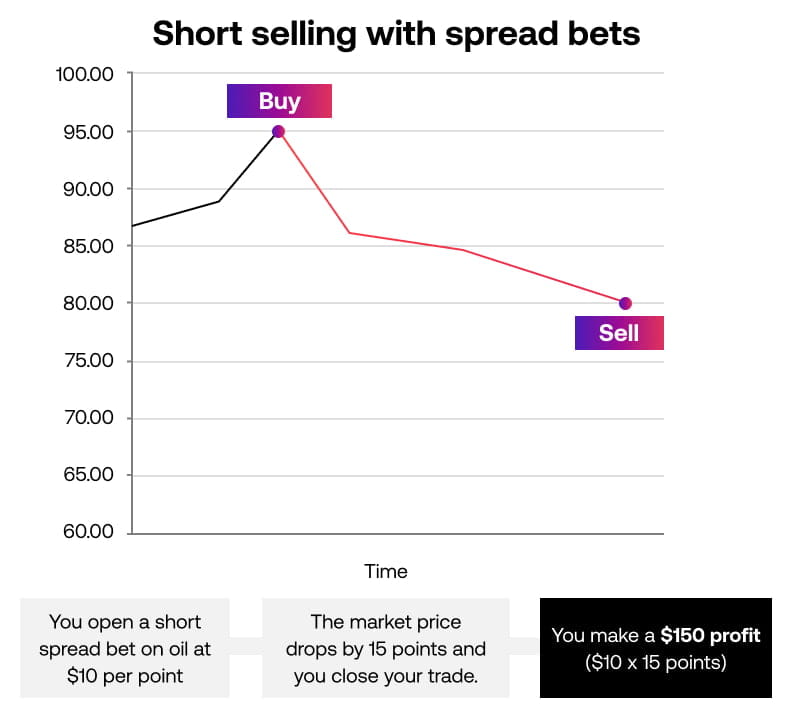
What does a short trade mean in practice?
In practice, when you go to open a short trade, you’ll be opening a position to ‘sell’ a market straight away.
Every market on the City Index platform has a sell order button. Choosing this option on your deal ticket means you’ll enter a sell order, which will create a short trade on the market.
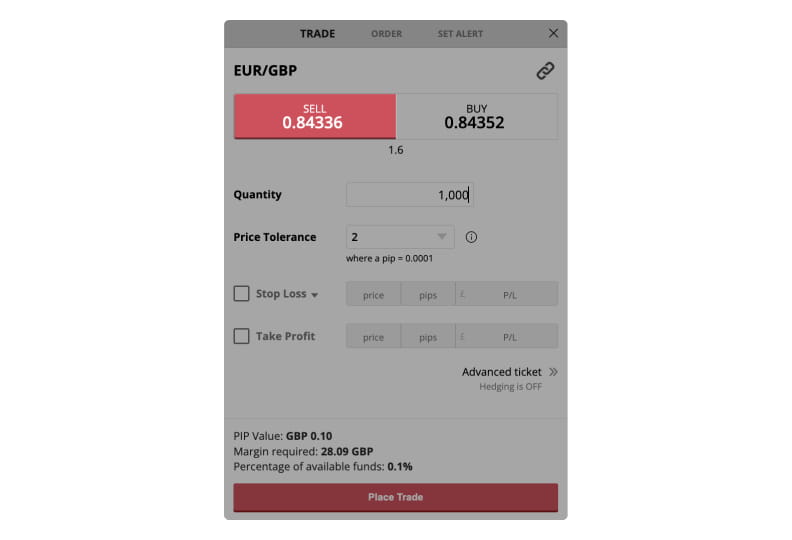
To close a short trade, you’ll place a corresponding buy order. When you’re long on a market, you’d buy to open and sell to close the trade. Short selling is the exact opposite, you sell to open and buy to close.
You can choose between manually closing your position with a buy order, or simply selecting the ‘close’ button on your trade.
Why short sell?
The practice serves two main purposes: speculation and hedging. But if you feel confident doing both at the same time, then you can build that into your strategy.
Speculation
Short-term speculators will go short to capitalise on the potential decline of a security or market. While investors tend to buy and hold, short selling enables speculators to trade volatility within an overarching trend.
Hedging
A short trade made on the same market you hold a long position in can help to reduce any losses you might incur. This is because if your current holding is falling in value, a short trade position will simultaneously rise in value, therefore reducing your total loss.
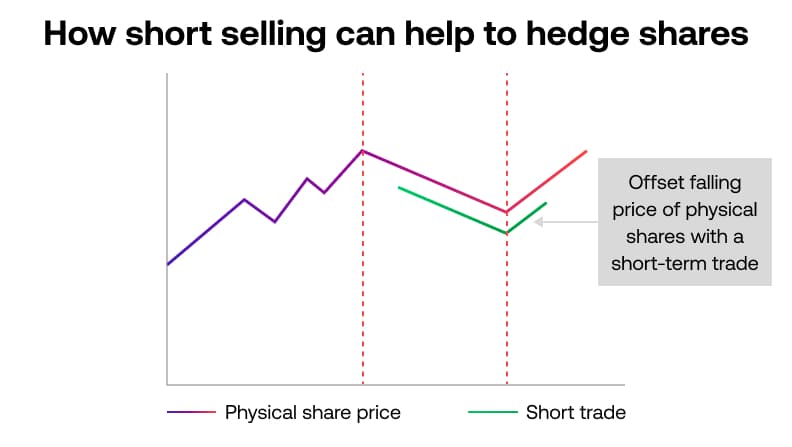
Short selling is also thought to have positive effects on the market as a whole as it provides liquidity and can improve the bid-ask spread.
The risk of short selling
The risk with shorting is that while a price has a finite distance to travel to zero, theoretically speaking it has scope to rise infinitely high, creating infinite losses on a short position. When prices begin to rise, short sellers can get stuck in what’s known as a ‘short squeeze’. This happens when sellers try to close out their positions, and the flood of buy orders push prices higher and higher.
You need to be especially careful when shorting individual shares, as share prices can 'gap' suddenly – if you ended up on the wrong side of a short trade, it could amount to a substantial loss.
Risks of shorting example
Let's say you are short the price of the shares of a company that has been struggling, with a share price at 100p. You know that its stock can’t fall beyond zero – so your maximum profit is from a potential 100p move.
However, news then breaks that another company is interested in a buyout and the share price starts to rise. In this situation, the stock could rise a potentially infinite amount, so you try to close your position before losing too much. If other short sellers join you, demand for the stock will cause its price to rise even more sharply and you could end up paying more than you bargained for.
